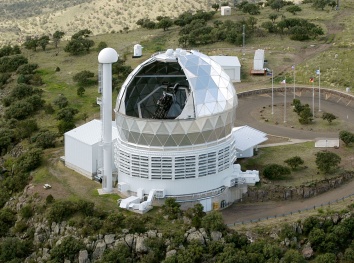New Findings Cast Doubt on Leading Theory of our Galaxy's Birth
9 November 2006
Studies of nearby small galaxies by an international collaboration of astronomers including McDonald Observatory’s Matthew Shetrone are casting doubt on a widely held theory explaining the Milky Way’s formation. The theory holds that our galaxy and other large galaxies are born from the collisions and mergers of smaller galaxies similar to those we see today around the Milky Way.
The large survey of nearby dwarf galaxies, still in progress, is showing that stars in these supposed building blocks of the Milky Way don’t have the expected chemical composition. The research will be published in tomorrow’s edition of Astrophysical Journal Letters.
The international group of astronomers from nine countries is using telescopes all over the world, including the Hobby-Eberly Telescope at McDonald Observatory, to probe the smallest galaxies in our Local Group, star by star. These small galaxies are called “dwarf spheroidal galaxies” because of their size and shape. Faint and diffuse, they are a thousand times fainter than our galaxy, making them the dimmest galaxies known.
The astronomers are studying the compositions of thousands of individual stars in these dwarf galaxies, to see if they match up with the compositions of the Milky Way’s oldest stars. It was expected that their compositions would match — but they do not.
The research to be published tomorrow was done by Amina Helmi of The Netherlands’ Kapteyn Astronomical Institute, and colleagues, with the European Southern Observatory’s Very Large Telescope in Chile. Helmi’s team measured the amount of the chemical element iron in about 2,000 giant stars in four southern hemisphere dwarf galaxies. They found that is does not match the amount of iron in the Milky Way’s oldest stars.
“The chemistry we see in the stars in these dwarf galaxies is just not consistent with current cosmological models,” Helmi said.
Shetrone says that studies of giant stars in dwarf galaxies using the Hobby-Eberly Telescope at McDonald Observatory, studying dwarf galaxies in the northern hemisphere sky, are finding the same result. Those results will be published soon, Shetrone said.
— END —
Science Contacts :
Dr. Matthew Shetrone, McDonald Observatory
The University of Texas at Austin
Phone: 432-426-4168
Dr. Amina Helmi
University of Groningen, The Netherlands
Phone: +31 50 363 40 45
Mobile : +31 64 304 14 24






